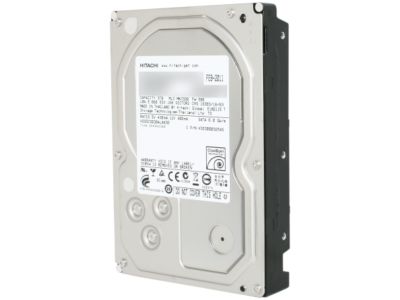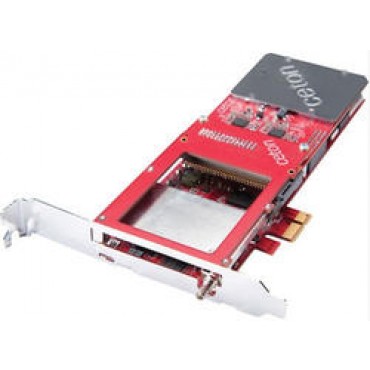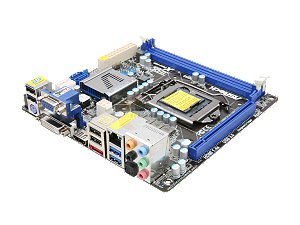Holiday 2011 Mainstream High-End Buyer's Guide
by Zach Throckmorton on December 9, 2011 12:00 AM EST- Posted in
- Guides
- AMD
- Intel
- Sandy Bridge
- CrossFire
- Sandy Bridge E
- Holiday 2011
- NVIDIA
Cinematastic SFF HTPC
I covered small form factor home theater PCs in May, offering both Intel- and AMD-based systems. Both of those rigs came in well under $1000. This guide's HTPC is substantially more capable in every regard, with a price tag to show for it. This SFF HTPC has four primary considerations in mind with its design: video transcoding capability, plenty of storage space for a large media library, Blu-ray playback, and finally the ability to serve as a cable box DVR replacement.
The best video transcoding CPU available on the mainstream market today is without a doubt the Intel Core i7-2600K. You can check out AnandTech's Bench for a good idea of how this chip performs in a wide variety of tasks. Further, Anand thoroughly reviewed the CPU at the start of 2011 upon its launch. It is important to note that the i7-2600K is total overkill for simple HD media playback—that can be accomplished easily by a CPU costing less than $100. Thus, this HTPC is capable of not just media playback, but extremely fast media encoding/transcoding as well.

The tragic flooding throughout southeast Asia, particularly Thailand, has caused a severe disruption of the global hard drive supply chain. It is a bad time to invest in many high capacity hard drives, but if you want to build a computer that can store terabytes of files, you have little choice. Unfortunately, we do not yet know when hard drive prices will return to their pre-flood levels, though it will likely be months from now. Therefore we're dropping over $500 on 6TB of mass storage in the form of two Hitachi HDDs. It's difficult to pay that much for drives that were half that price only months ago, so if you can put off buying lots of storage for several months, you should considering doing so.

As for Blu-ray playback and cable box DVR replacement, we're going with a standard LITE-ON Blu-ray burner that supports 3D BR-Ds and a Ceton InfiniTV quad-tuner. The Blu-ray burner costs about twice as much as Blu-ray readers, so if you are not interested in burning BR-Ds, you can save some money by foregoing that capability. Note that this is an OEM drive—you will have to purchase appropriate software or use a freeware application with it. (My personal favorite freeware BR-D player is Media Player Classic - Home Cinema, but there are others that also work well.) The Ceton InfiniTV essentially acts as a replacement for four cable boxes, allowing you to view and/or record up to four HD cable programs simultaneously. This is a very powerful card when combined with a LAN. It can certainly serve as a centralized multistream HD cable player for an entire household, and it works without issue with Windows 7's Media Center.

We've selected ASRock's Z68M-ITX/HT mini-ITX motherboard to tie all of the components together. This is a very feature-rich ITX board that includes both HDMI out as well as DVI and optical S/PDIF interfaces. As it is a Z68-chipset board, it also supports the i7-2600K's impressive overclocking abilities. The only real limitation of the board is its sole PCIe x16 lane. The Ceton tuner card uses a PCIe x1 interface, which can be up-plugged without issue into the ASRock board. However, if the Ceton tuner is in place, there are no additional expansion slots—and with only four SATA ports, you are limited to four total SATA devices. In this case, the Blu-ray drive, an SSD boot and application drive, and two mass storage HDDs.
For the SSD, we're recommending Crucial's M4 128GB SATA III drive. These drives have a reputation for reliability and while not the fastest SSDs, they fare quite well against the competition. We're opting for a 128GB capacity SSD primarily to accomodate potentially large video encoding software suites, like Adobe's CS5.5 Master Collection. If you don't need as much space for your OS and application drive, you can save about $100 by going with the 64GB variant.
Because the ITX board has only two DDR3 slots, we're limited to 8GB (a single 2x4GB kit) unless you're interested in spending substantially more money on a 2x8GB kit of DDR3. For example, CS5.5 can frequently eat more than 8GB of RAM when I'm transcoding HD video, but whether a 16GB kit is worth more than a $100+ cost increase compared to an 8GB kit will depend on your particular software usage.

Powering everything we have Silverstone's Strider Plus ST50F-P PSU. This model is one of the smallest ATX power supplies, and its full modularity cuts down on cable clutter. You can read more about this excellent PSU in Martin's recent review. Finally, housing all of these components is Lian-Li's venerable PC-Q08A. This has proven to be my favorite ITX case for a number of reasons. First, I think it looks very nice. Second, the combination of the 140mm front intake fan and 120mm top exhaust fan means it runs cool for an ITX box. It is somewhat large for an ITX chassis so stuffing all of these components into it will be challenging (as all ITX builds are) but not maddeningly difficult (as some ITX builds can be, especially for those of us with larger hands). Don't worry—the stock i7-2600K CPU cooler clears the bottom of the PSU with some headroom to spare in the PC-Q08A. Finally, it should be noted that the PC-Q08 is available in black and red as well as the silver chassis in the list below.
| Component | Product | Price |
| CPU | Intel Core i7-2600K | $320 |
| Motherboard | ASRock Z68M-ITX/HT | $120 |
| RAM | Crucial 8GB (2x4GB) DDR3 1333 | $40 |
| SSD | Crucial M4 128GB | $210 |
| HDDs | (2) Hitachi Deskstar 3TB 5400rpm | $520 (total) |
| TV tuner card | Ceton InfiniTV Quad-tuner | $294 |
| Optical drive | LITE-ON IHBS112-29 | $100 |
| Power supply | Silverstone Strider Plus ST50FP-P 500W | $80 |
| Case | Lian-Li PC-Q08 | $110 |
| Operating system | Microsoft Windows 7 Home Premium 64-bit (OEM) | $100 |
| Total: | $1894 | |
If you're more interested in using your PC to play video games than movies, we have a system for you on the next page.










52 Comments
View All Comments
Z Throckmorton - Friday, December 9, 2011 - link
Hi Araemo - Anand performed a great analysis of RST a few months ago (http://www.anandtech.com/show/4329/intel-z68-chips... You can see that RST definitely does not suck compared to just going with a dedicated OS/app SSD. That said, it's also clear that RST's utility really depends on usage patterns. From the sound of it, it sounds like you'd really benefit from a 64GB caching SSD. I personally have not used RST for an extended period of time; I've just moved from a 40GB to 80GB to 120GB SSD as funds have permitted. I tinkered with it and found the time and effort was simply not worth it compared to the cost of a dedicated OS/app SSD. ...Watch for sales (Intel's 320 120GB came close to $100AR on Black Friday a few weeks ago), or grab a used one off of our FS/T forums! :)Araemo - Friday, December 9, 2011 - link
I did read that, but I forgot about the after-usage tests.. though unless I'm misreading it, he doesn't go into how long before you get back to the good speeds, is it after one more launch, or does it take a few to re-evict the other apps?DanNeely - Friday, December 9, 2011 - link
I bought a 120 about 2 years ago, and am waiting for a 240gb model to drop below $300. I haven't seen anything except sandforce get that low, and after all the firmware problems they've had I'm hesitant to buy one even though the BSOD bug has supposedly been fixed.FormulaRedline - Friday, December 9, 2011 - link
Unless you plan to attach your ~$2,000 gaming machine to a $90 monitor, I think the gaming system with a single 580GTX is going to be severly limited by the graphics card. If I was doing a $2k build today, specifically for gaming, I'd find a way to squeeze 580 SLI in there. By no means do I think it unreasonable to spend half the money of a gaming build on the GPUs. Certainly you should be allocating more than a quarter.Drop that SSD down to 64GB (basically the OS and some common programs), cut back the HDD storage (add more when prices drop), get a smaller PSU (I run 480GTX SLI, more power hungry cards, with my Kill-A-Watt showing draw during gaming of <550W...so I question the bench results), swap the water cooler for a good $30-$40 air cooler (you'll still be GPU bound for gaming), and use the freed up cash on more GPU. SLI drivers are so good these days that even a 570 SLI setup would be a huge step up from a single 580. That is computer that will run the newest games on the highest setting at big resolutions (2560x1600@60Hz) or even 3D (1920x1080@120Hz).
JarredWalton - Friday, December 9, 2011 - link
I'm running a 30" LCD off a single GTX 580, and even the latest games are generally playable at max details and 2560x1600. Batman: Arkham City runs fine with DX11 + AA + PhysX (post-patch), Skyrim gets 8xAA and DX11, Rage could do max details and then some, Battlefield 3 is at least 40+ FPS... I hope you get the point. My biggest gripe with a single GTX 580 is actually something SLI GTX 580 won't really fix: 1.5GB VRAM. At maximum detail, we're now starting to see games push beyond that mark, even at 1920x1200/1080p, so some time in the next year or so I expect 1.5GB to prove insufficient.FormulaRedline - Friday, December 9, 2011 - link
Maybe so (unfortunately we're still in the area of console ports for systems that came out in 2005). However, consider a modded Skyrim running high resolution textures with AF x16 and AO enabled in the Nvidia control panel. Or, as you point out, some stock games like BF3. These will bring the article's machine below VSYNC, while the added GPU power would add framrate back.In other words, there is something to gain, even if only in some games (though I would also argue those games are the most relevant), while the cuts to get there do not sacrifice anything. Yes, watercooling to get a few more MHz out of the CPU or a bigger SSD to load the whole CS5 suite onto would be great for a productivity machine, but that's not the purpose of this build.
As to the 1.5GB...I'm with you there. Personally, I wouldn't be building a machine right now; I'd be waiting for the next generation of cards at this point. Of course always waiting for the next best thing is a losing game, but I think we're out of the sweet spot for top end GPUs now.
l_d_allan - Friday, December 9, 2011 - link
ggathagan - Friday, December 9, 2011 - link
Not a particularly intelligent comment, given the plethora of CPU, GPU, PSU, motherboard, memory cooling and case reviews on this site that supply the very metrics you crave.This isn't a review, it's a buyer's guide
coffeejunkee - Friday, December 9, 2011 - link
These systems look fairly decent but I think you'll need a 3-pin y-splitter for the workstation to connect both the PC-9F front fans.The R3 can fit up to 7 fans, in that case you'll probably want a separate fancontroller since the GA-Z68XP-UD3 has only 1 controllable casefanheader.
Not convinced about H80 though, doesn't seem worth the money to me when you can get Thermalright Macho for less than half the price. 'Introduction to real watercooling' sounds like a non-argument to me.
ven - Friday, December 9, 2011 - link
In the gaming ring everything else is fine, but as for the case i think CM HAF 912 will be more suitable than R3. Fully vented front panel than compared to small sideways front intake in R3, so more air flow and also if you remove the HDD cage(CM) Graphics card will get direct cooling from one of the front panel fan it is also much cheaper than R3($59)As for the motherboard, Asus Maximus-iv Gene-Z is also nice option both the Gigabyte and Asus are almost same in the spec, Asus has some more whistles like ROG connect,Better UEFI, and also it looks cool.